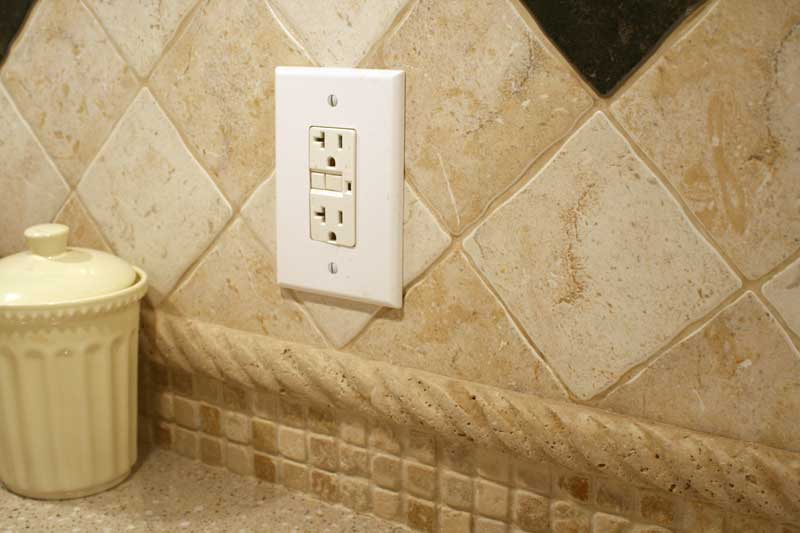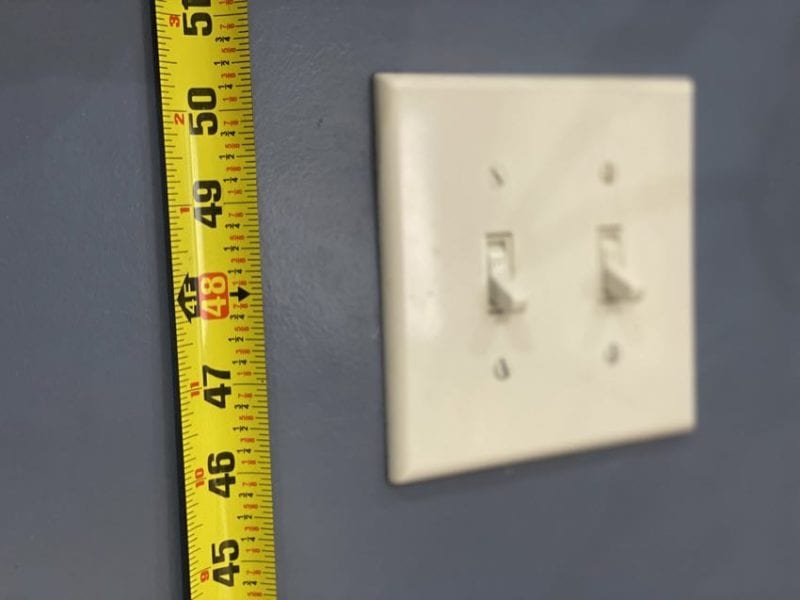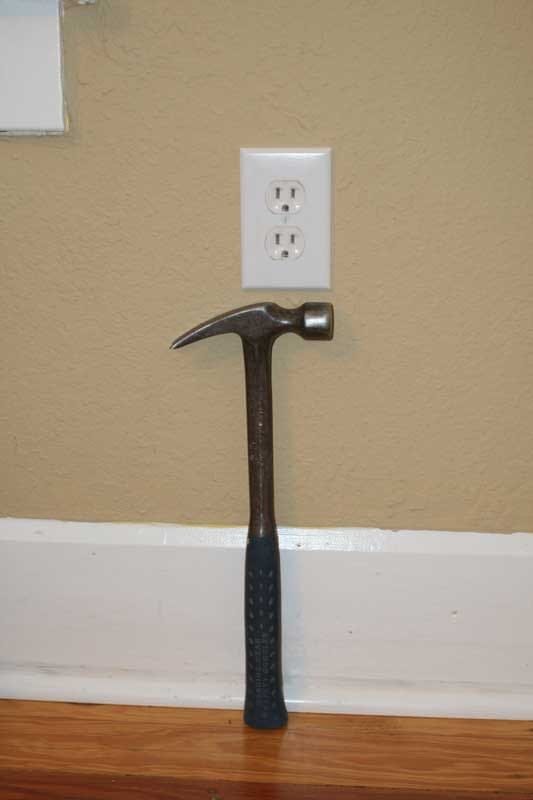During a remodel, customers and clients ask me lots of questions. Recently, I got a question about the rules for how high to mount receptacles, outlets, and switches. Several rules exist with regard to placing outlets, however, the height of a receptacle or wall switch isn’t part of the NEC code. At least, the code avoids rules with respect to the standard heights of both switches and outlets.
The General Rule of Thumb for Outlet Spacing
The primary rule is what’s known as the 6’/12′ rule. NEC 210-52 states the following (abbreviated for easier digestion):
Receptacles are needed in every room of a home such that no point on a wall is over 6′ from an outlet. This means that you need an outlet within 6′ of a doorway or fireplace. A long wall, however, may have up to 12′ between outlets. Any outlet above 5′ 6″ cannot be counted towards this equation. Floor outlets less than 18″ from the wall can.
There are also other guidelines that need to be followed. For example:
- Every hallway should have at least one receptacle if it is 10′ or longer in length
- Kitchen countertop outlets require at least two 20-amp circuits and must have GFCI protection. Allow no more than 4 feet between countertop outlets.
How High to Mount Receptacles or Outlets
Now to the point of this article. As for typical heights, that isn’t as well-regulated (and we’re glad for that). Generally, you want to mount receptacle boxes with the bottom of the box about 16-inches off the floor. Coincidentally, this roughly equates to the same height as your garden variety 22-ounce framing hammer. We still recommend using a ruler, however.
How High to Mount Kitchen Receptacles
For kitchen countertops, how high you mount the receptacles depends on your layout. There are no height guidelines except to keep them under a maximum of 20-inches. This seems obvious since the top cabinets start at 18″). Placement somewhat depends upon how you intend to do the backsplash. If you mount the bottom of the box about 2-3 inches above the top of your tile, solid surface, or stone backsplash, you’ll have a nicely positioned outlet that is easy to access.

For refrigerators, you have some flexibility. Typically, we mount these outlets about 48-inches off the floor.
How High Do You Mount Light Switches?
Typically, you mount light switches about 48-inches high from the floor (on-center). This can vary, but we find this a great rule of thumb and very consistent with the builders and subcontractors in our area. We also tend to run these as a dedicated 15A or 20A circuit, though code may not require that.

Editor’s Note: We knew a guy who had all of all his switches set to be mounted 30-inches high off the floor. At first, we thought this was some kind of accommodation for a handicapped member of the family. After inquiring further, we found that it was simply to let him flip on the lights in every room without having to lift up his arm… While there was nothing technically wrong with this, we don’t recommend screwing up the potential resale value of your home over a trendy decision based on laziness or trying to be different! Follow the implied standards.
Final Thoughts
Building plans may have measurements that indicate on-center, top, or even bottom of box measurements. Just double-check your work to make sure it all makes sense and that you have sufficient ergonomics to activate all switches and access your outlets efficiently. Hopefully, knowing how high to mount your receptacles and switches lets you get on to the more important tasks of layout and design!



